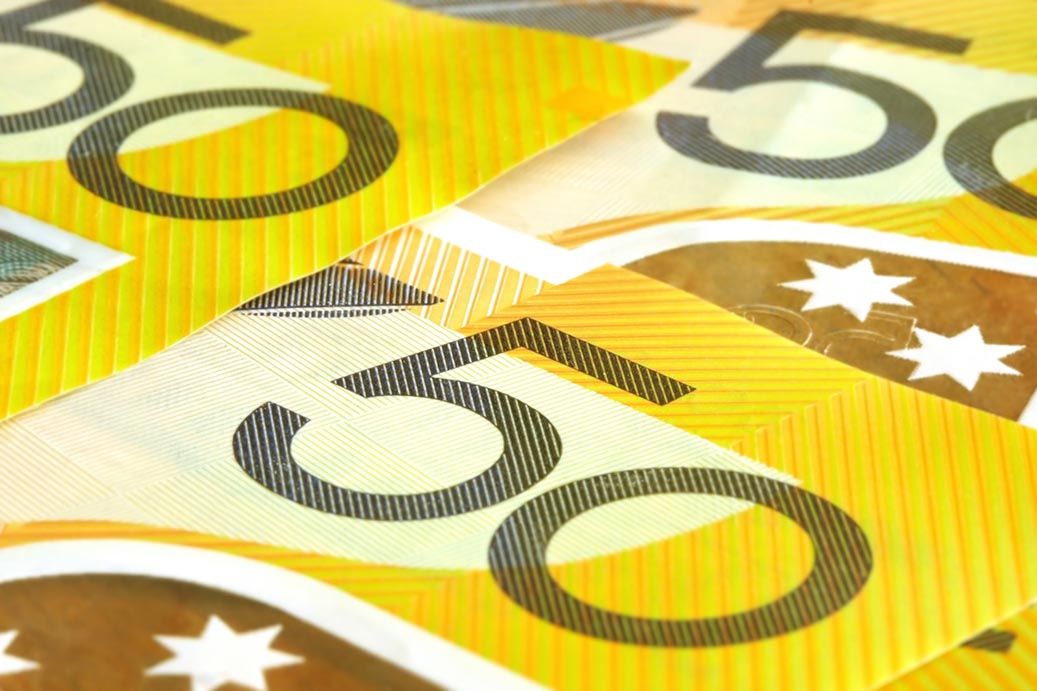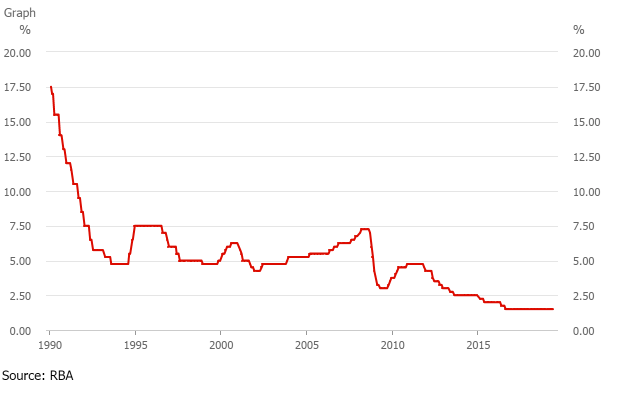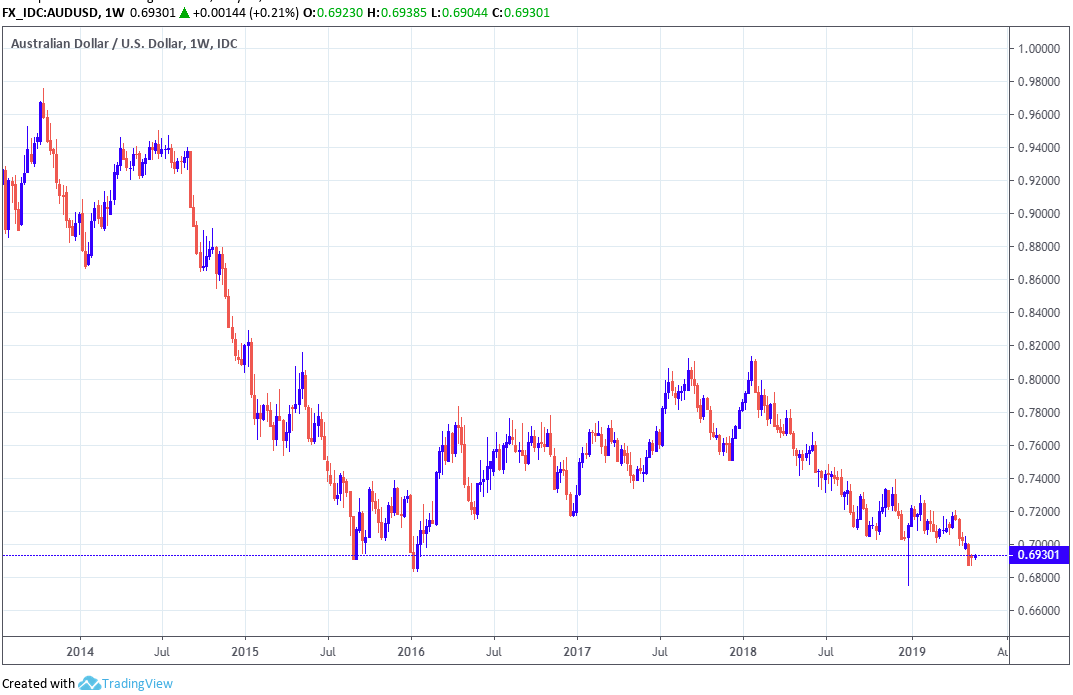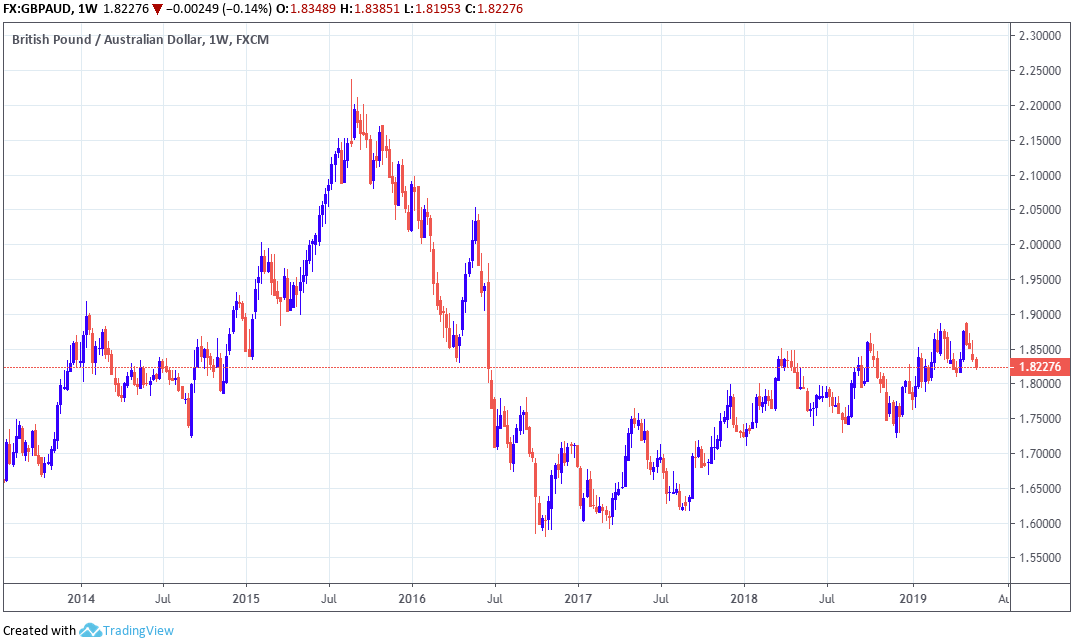Pound-to-Australian-Dollar Rate Forecast to Rise 5% by Year-end says Westpac
- Written by: James Skinner

Image © Robyn Mac, Adobe Stock
- AUD to cede further ground to GBP and USD this year.
- As RBA cuts rates three times and contemplates QE.
- But 'no deal' Brexit is a risk to Westpac's GBP forecast.
While the Pound has fallen against the Australian Dollar over the course of May it still maintains a one percent gain against the Aussie for 2019, and forecasters at one of the country's largest lenders see the potential for further upside in GBP/AUD over the remainder of 2019.
According to the latest forecasts from Westpac, the Australian Dollar is set to face difficulties over coming months that will allow the GBP/AUD rate to recover to a post-Brexit-referendum high.
Westpac are now forecasting three cuts at the Reserve Bank of Australia (RBA) in 2019 with forecasts for employment, wages growth, economic growth, inflation and conditions in the housing market consistent with the need for policy at the central bank to ease through the full course of 2019.
Westpac say the Australian unemployment rate is likely to rise to 5.4% over the coming months, from just 4.9% back in February, while economic growth is expected to slow further this year and inflation continue to significantly undershoot the RBA target.
A third RBA interest rate cut for 2019 is not yet fully priced into the Australian Dollar so can be expected to weigh on the Antipodean currency as markets finally realise the central bank might not stop with a second August rate cut.
The rule of thumb goes that when markets price in additional interest rate cuts at a central bank, that bank's currency will fall.

Above: Reserve Bank of Australia cash rate since 1990.
Australia's main interest rate has been at 1.5% ever since August 2016 but financial markets are now convinced it will be cut progressively during the summer months in response to an economic slowdown that is coming amid a multi-year period in which inflation has remained below the 2%-to-3% target.
At 1.5% the interest rate was one of the highest in the developing world, thereby attracting strong inflows of investor capital that in turn bid the Australian Dollar higher.
Should the RBA start cutting, at a time when other major central banks are holding rates, or even looking to raise them, what was once an advantage for the Aussie Dollar has flipped into a distinct disadvantage.
"Our central forecast for the terminal cash rate in this cycle is 0.75% with risks to the downside, although we would certainly see 0.5% as the floor for the cash rate, with QE a more effective policy tool thereafter," says Robert Rennie, head of research at Westpac. "The revised terminal cash rate has implications for our AUD and fixed rate forecasts. While back in February we expected the low in the AUD to be USD 0.68 we have now shaved that forecast back to USD 0.66 by end 2019."
Interest rate decisions are normally made in relation to the outlook for inflation but have influence over international capital flows, which tend to move in the direction of the most advantageous or improving relative-returns.
Higher rates tend to draw flows toward a currency whereas a threat of lower rates can see investors driven out of and deterred away from a currency. Westpac's interest rate expectations are the reason it's downgraded forecasts for the Aussie Dollar.
Westpac forecasts the Australian Dollar will fall by 4.3% against its U.S. rival before the year is out, taking the AUD/USD rate down to 0.66, although this assumes a continued resilient performance from commodity prices. Without a robust iron ore price, the Aussie's losses could well be greater.

Above: AUD/USD rate shown at daily intervals.
Meanwhile, the Pound-to-Australian Dollar rate is expected to rise another 5.4% by the time the curtain closes on 2019, taking it up to 1.92. That would be the exchange rate's highest level since the Brexit referendum of June 2016.
Westpac has a bullish outlook for Pound Sterling but this could easily be frustrated by events in Westminster, which will play host to a Conservative Party leadership contest over the coming months and a battle among MPs to succeed Theresa May as Prime Minister.
A long lineup of pro and anti-Brexit MPs are now jossling for the support of parliamentary colleagues in the looming leadership election and much rests on the outcome of that process. It could be the difference between a revokation of the Article 50 EU exit notification and the UK making the cleanest of breaks with European Union.
A clean break would see all of the UK's subordination to the all of the European Union institutions ended but would also mean departing the bloc and defaulting to doing business with it on World Trade Organization (WTO) terms.

Above: Pound-to-Australian-Dollar rate shown at weekly intervals.
While Westpac hold a constructive view on the Pound's outlook against the Aussie Dollar, others see downside pressures on Sterling owing to Brexit translating into a weaker GBP/AUD.
"The final weeks before the October 31 Brexit date are likely to be fraught with political tension and in the meantime GBP will be clouded by political woes. On a no deal Brexit we see potential for GBP/USD to plunge to the 1.10 region," warns Jane Foley, a strategist at Rabobank.
Rabobank and many other firms say the Pound would fall as low as 1.10 against the U.S. Dollar in the aftermath of such an exit which, when combined with Westpac's forecast of a 0.66 AUD/USD rate at year-end, would drive the Pound-to-Australian-Dollar rate all the way down to 1.66.
This would amount to a fall of 8.7% from Thursday's level and be the lowest ebb for the exchange rate since the months immediately after the 2016 referendum.
Time to move your money? Get 3-5% more currency than your bank would offer by using the services of foreign exchange specialists at RationalFX. A specialist broker can deliver you an exchange rate closer to the real market rate, thereby saving you substantial quantities of currency. Find out more here.
* Advertisement




